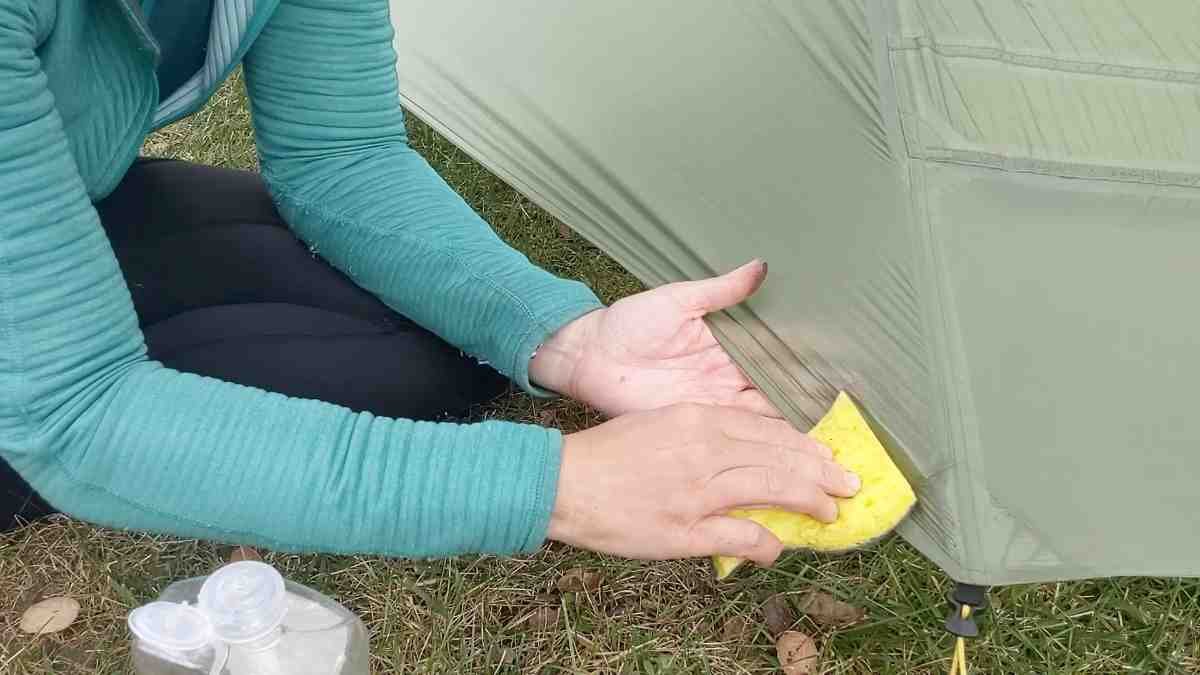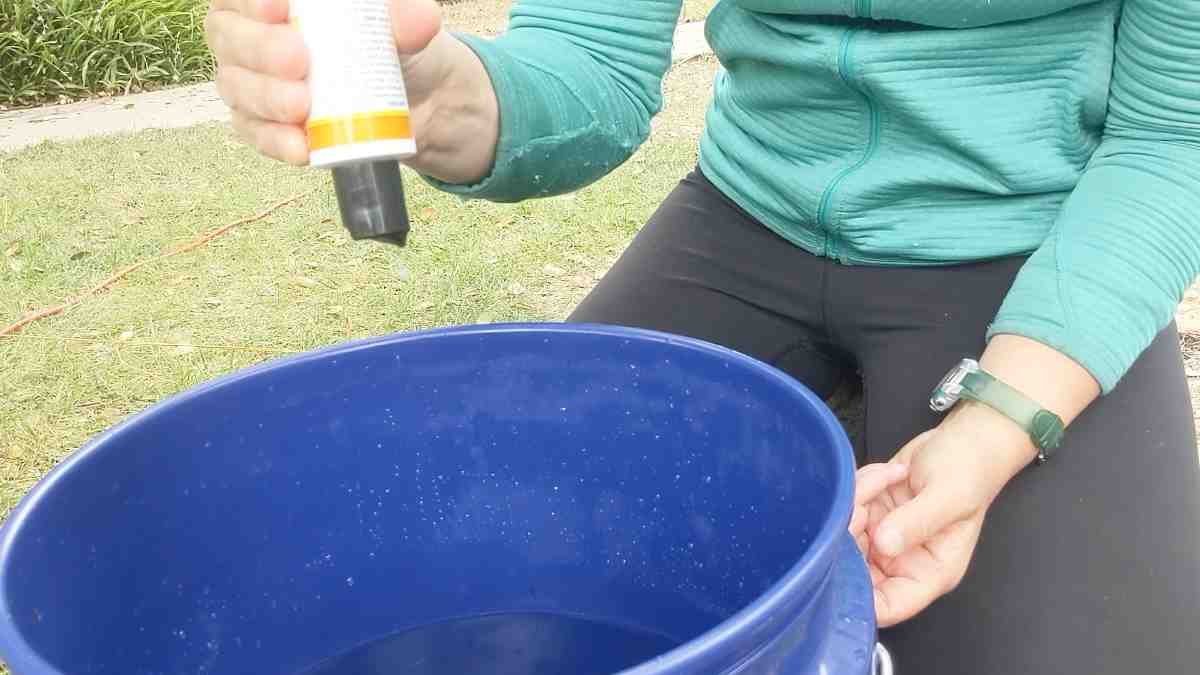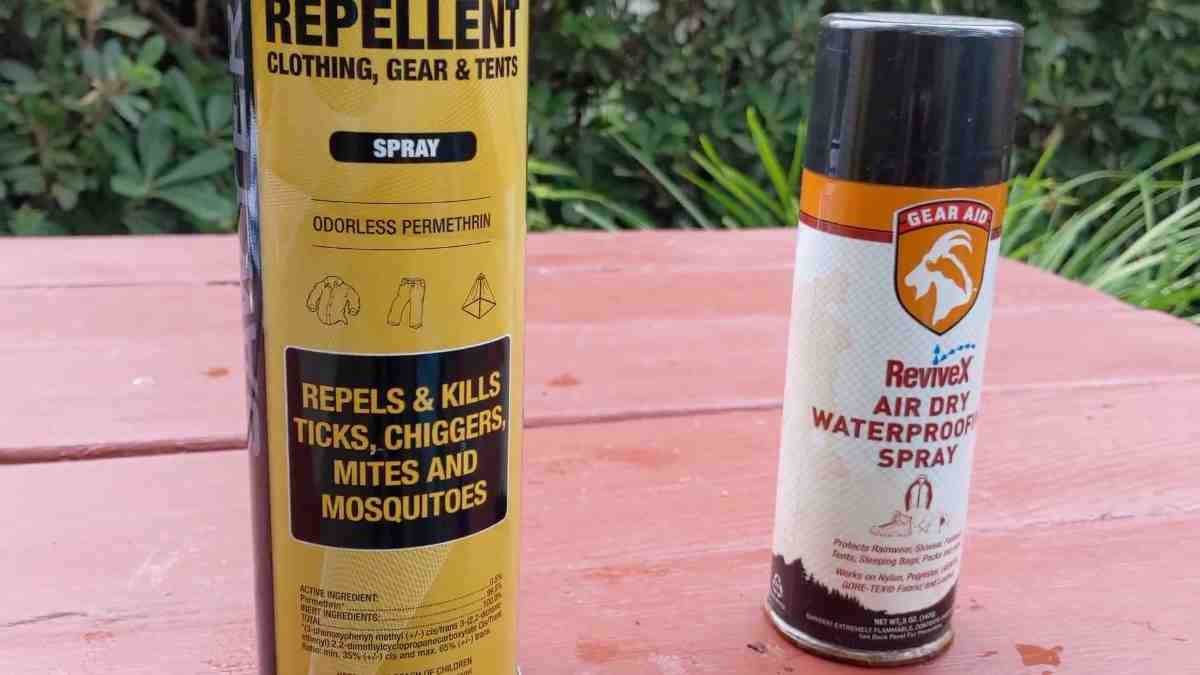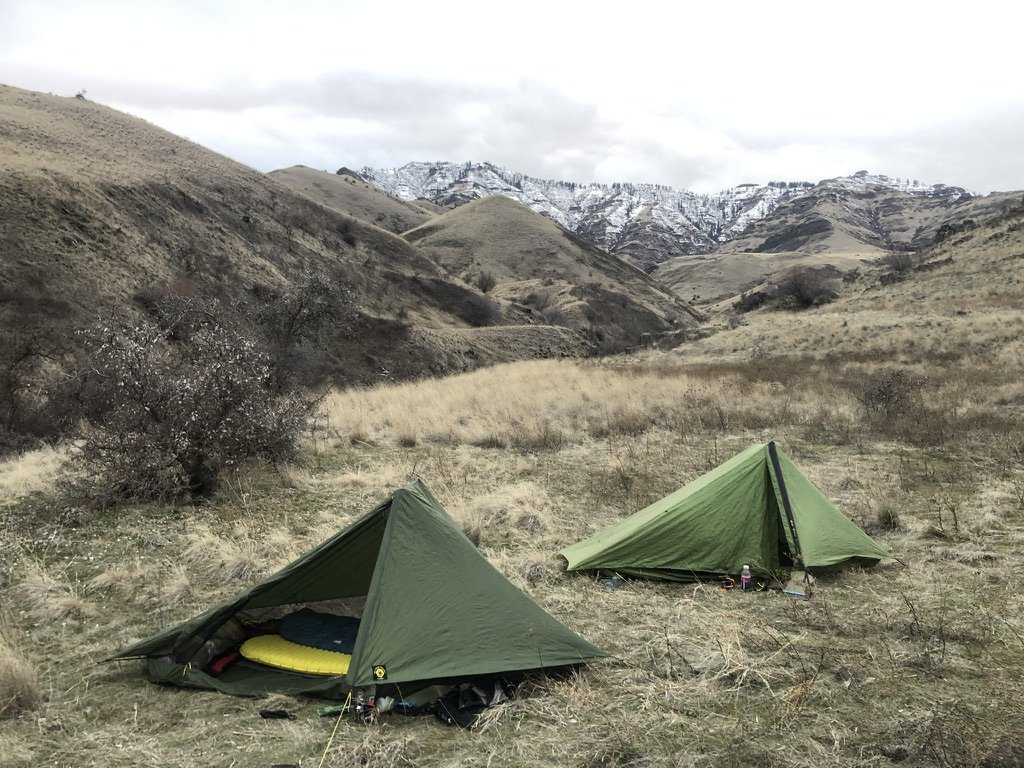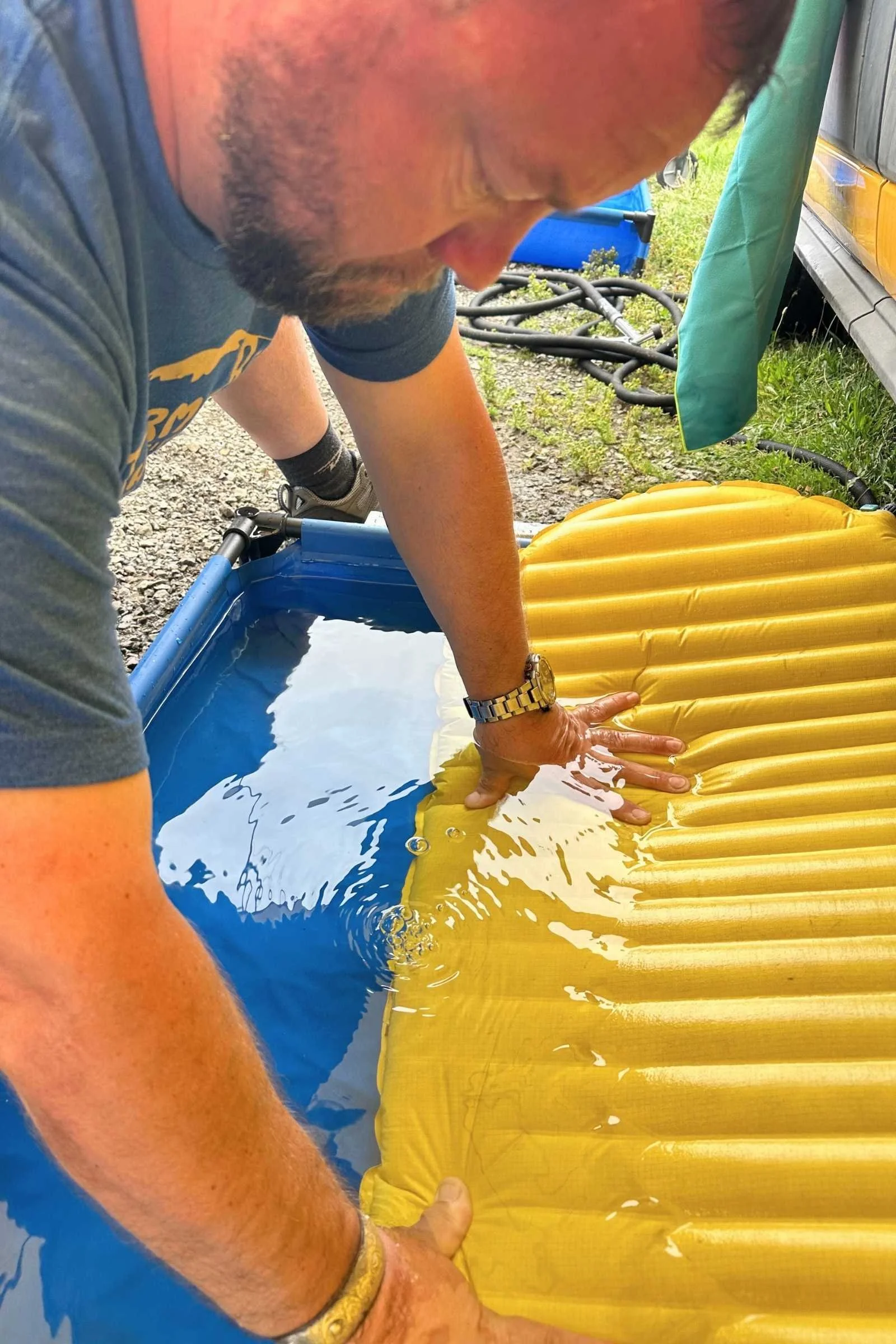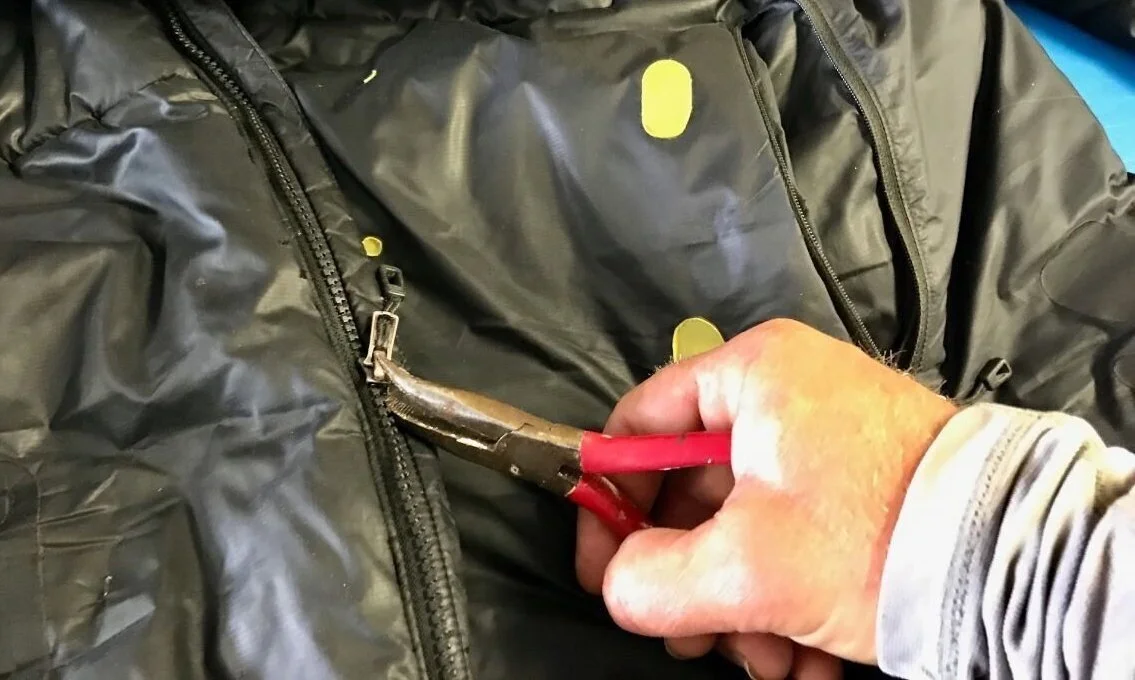How to Wash a Tent
Extend the lifespan of your camping tent or backpacking tent by keeping it clean, waterproof, and functional
August 18th, 2023
To wash a tent, start by setting it up and inspecting what places need spot cleaning. Then use a sponge to gently wipe away stains.
On a camping trip or backpacking trip, it’s important to start well prepared.
There is nothing worse than making it to your campsite only to discover you've got a dirty tent or one that smells like campfire smoke, mold, or mildew (or worse, that your zipper doesn't work or the seam sealer has failed).
Now is a great time to go through your gear and see what needs to be cleaned, repaired, or replaced.
Washing a camping tent, backpacking tent, 4-season tent, ultralight tent, or bikepacking tent is a great way to save money on replacing camping gear and reduce the amount of waste in landfills.
In this guide, we’ll to show you how to wash a tent.
We create reader-supported, objective gear reviews independently selected by our editors. This story may contain affiliate links, which help fund our website. When you click on the links to purchase gear, we may get a commission — without costing you an extra cent. Thank you for supporting our work and mission of outdoor coverage for every body! Learn more.
Some of the equipment you’ll need to wash your camping, backpacking, or bikepacking tent.
Here’s what you’ll need to clean a tent:
A bathtub, large sink, or large bucket
A clean, non-abrasive sponge
An old toothbrush or soft brush
Mild detergent, such as dish soap
Mineral oil or hand sanitizer
Technical mild soap made for outdoor gear, like Nikwax Tent Cleaner or Revivex Pro Cleaner
A place to dry your tent
Plenty of time to dry (I advise starting in the morning and choosing a low humidity day over 60F)
Before you start
Before washing your tent, we advise you to:
Ensure that any cleaning or treatment product is safe to use on your tent; and
Spot test with each cleaning or treatment product to be sure there are no unexpected or adverse effects.
Clean tent zippers with a toothbrush.
Steps to clean a tent
1. Inspection
First, set up your tent. Not only does this remind you how to do it after a few months in the closet over the winter, but it allows you to better inspect for stains and soiled areas. Take notes or photos of problem areas.
2. Spot cleaning
The next step is spot cleaning. Remove any visible debris like dirt, sand, and pine needles. You may need to shake out your tent. Using your sponge and mild dish soap, target areas that are particularly dirty. If your tent has plastic windows, use warm water and vinegar and a microcloth to clean, or try a gentle window cleaner. Check the bottom of the tent floor. If you aren't using a tent footprint, pine sap may stick to the tent floor.
HOW TO REMOVE PINE SAP FROM A TENT
Pine sap on gear is very common when tent camping in conifer forests. If you need to remove pine sap, use a mineral oil or alcohol-based hand sanitizer. Be careful not to scrub too much or let it stay on for more than 15 minutes, though, as these chemicals may impact some technical tent fabric. Rinse thoroughly before proceeding.
3. Zipper check
Check that zippers open and close smoothly. If there’s mud, dirt, or even salt from beach camping trapped in zipper teeth, it might stick when you zip and unzip. Get a toothbrush in there and rinse with water to dislodge sand. You can also use a zipper wax lubricant. If your zipper needs further help, see our post on How to Fix Zippers on Outdoor Gear.
4. Repair any rips
Use Gear Aid Tenacious Tape to repair any holes, frays, or rips. If you've used duct tape to repair holes during your last camping trip, carefully try to remove it. See our How to Repair a Tent guide for more details on specific fixes.
5. Prepare your Soapy Water
It's easiest to wash your tent when you have access to a bathtub or a large sink. I’ve washed in a 5-gallon bucket before, but it’s trickier to fill up and rinse. If that’s your situation, I suggest using a hose and filling it up outside.
SHOULD I WASH A CAMPING TENT IN A WASHING MACHINE?
It’s tempting, but don’t ever use a washing machine, as tents often lose grommets, zippers, and seams can get destroyed. Most tents are made of delicate material that can be shredded by an agitator.
WHAT SOAP SHOULD I USE TO CLEAN A TENT?
Always use soap or detergent specifically formulated for outdoor gear. These gentle soaps will help keep the longevity of your gear's technical features. We recommend Nikwax Tent Cleaner or Revivex Pro Cleaner
6. Prepare your camping tent for washing
Before you clean a tent, prepare it for washing by removing any parts that may break or snag. If your guylines are attached, like on my tent, secure them or totally remove them before starting. They can form knots and make the tent cleaning process more difficult. If your tent has a removable inner tent, detach it and wash it separately.
Make sure all your doors are unzipped. Then, turn your tent inside out.
Measure out the amount of soap you’ll need to wash you tent. Be sure to only use gentle soap designed for washing technical gear like tents.
7. Soak your tent in soapy water
Fill your tub with cold water or lukewarm water (depending on what type of soap you are using). Most cleaners do not recommend using hot water. Follow the directions on the bottle of your tent cleaner to determine how much water and cleaning solution to use and how long to soak.
8. Rinse
After the tent has soaked, you may need to rinse it a few times to get all the soap out. Keep rinsing until all of the dirt has been removed and you are left with clean water in the sink or bucket. When soap has been removed, be careful lifting your wet tent up. It will become much heavier with water, and that could make it easier to rip delicate tent fabric.
To deep clean your tent and remove set-in odors, use an odor eliminator after washing with soap.
9. How to deep clean a tent (optional)
This step is optional, but if you've got a moldy tent or your tent has developed mildew—which can develop when you haven’t had the chance to fully dry your camping tent —use an enzyme cleaner like Mirazyme or Gear Aid Revive X Odor Eliminator.
Carefully follow the directions to remove mildew and clean mold as listed on the bottle. If an enzyme cleaner is on the tent for too long, it can eat away waterproof coatings. Enzyme cleaners work during the drying process, so don’t rinse it out.
10. Dry your tent completely
Dry your camping tent in a cool shady area—or set it up to dry. While tents are designed to take some UV radiation, it can weaken the tent fabric over time.
Two spray-in applications that you can apply to your tent after washing.
11. Apply Permethrin or a Durable Water Repellent (DWR) Treatment (Optional)
Once your tent has dried, consider applying spray-on treatments. Two treatments I use after tent cleaning are:
Permethrin, which repels and kills ticks, mosquitos, and chiggers. A bugproof tent can be very handy while camping. Permethrin lasts between 5 and 25 washes.
Spray On Durable Water Repellent, which is an easy way to restore some of the waterproof coating on your tent.
With both of these treatments, it’s really important to follow the directions. Choose only one treatment to spray on at a time.
Be sure to read the directions before applying to your tent. Apply spray-on applications to a fully-dried, fully-washed tent. Set up your tent and then apply.
HOW TO APPLY A SPRAY-ON TREATMENT FOR YOUR TENT
Make sure your tent is set up outside in a well-ventilated area protected from wind. Only apply to a completely dry tent.
Using a sweeping motion, spray only the outside of the entire tent from about 8 inches away.
Wait until it completely dries before touching it to give it plenty of time to set.
12. Wipe down tent poles
If your tent poles have accumulated sand or dirt, wipe them down with a rag. Check each tent pole to make sure it is not cracked and that cables are not frayed.
13. Inspect the tent seams
After your tent is clean and dry, check all of the seams to be sure the seam sealant is still intact. If you see any areas where the sealant is loose or pulling away from the seam, you may need to reapply a seam sealer, such as Gear Aid Silnet Seam Sealer.
14. Dry your tent completely and store properly
Store your tent someplace cool and out of direct sunlight. Protect it from rodents or other creatures that may be tempted to chew on tent material or guylines. Most tents come with their own stuff sack that is sized to hold the tent.
Two backpacking tents we tested in eastern Oregon. After a good backpacking or camping trip, washing your tent can extend the life of one of your most important pieces of gear.
Why cleaning a tent matters
These are some basic tent cleaning tips to get you ready for your next camping trip. Cleaning your tent not only reduces odors and stains, but may help restore waterproofing and breathability. Ultimately, cleaning a tent can be an excellent alternative to replacing a tent and may even save you money. Practicing regular tent care each season is a good way to keep it in good condition. If your tent needs repairs, see our guide to How to Repair a Tent or How to Fix Zippers on Outdoor Gear.

